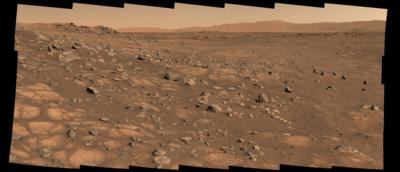Bureaucracy’s Self-Perpetuation
NASA has established the new Moon to Mars Program Office at the space agency’s Washington D.C. headquarters. The office is tasked with overseeing NASA’s lunar and Martian human exploration programs and will be headed by Mr. Amit Kshatriya, who previously served as the agency’s acting deputy associate administrator for Common Exploration Systems Development—a capacity in which he provided leadership and integration across several of the programs which now fall within the purview of the new office.

The Moon to Mars Program Office resides within the Exploration Systems Development Mission Directorate, and falls under the auspices of Associate Administrator Jim Free.
NASA Administrator Bill Nelson stated: “The Moon to Mars Program Office will help prepare NASA to carry out our bold missions to the Moon and land the first humans on Mars. The golden age of exploration is happening right now, and this new office will help ensure that NASA successfully establishes the long-term lunar presence needed to prepare for humanity’s next giant leap to the Red Planet.”
The Moon to Mars Program Office—as directed by the 2022 NASA Authorization Act—focuses on hardware development, mission integration, and risk management functions for programs critical to the agency’s exploration approach. Presently, subject approach comprises primarily the Artemis program, which seeks to establish a lasting human presence on the lunar surface for purpose, in part, of serving as a staging area for near-future missions to Mars. The Artemis program is predicated largely upon the Space Launch System rocket, Orion spacecraft, supporting ground systems, human landing systems, spacesuits, the proposed Gateway cislunar space station, and additional initiatives germane to deep-space exploration.
The new office will also lead planning and analysis for long-lead developments in support of manned Mars missions.
In addition to Mr. Kshatriya, the new Moon to Mars Program Office will be staffed by Lakiesha Hawkins, who will serve as the office’s deputy and support all aspects of day-to-day management and operations; and Steven Creech, who will serve as the office’s technical deputy—a capacity in which he will be responsible for ensuring technical issues are identified and brought to resolution across the entirety of the sections and programs remanded to the oversight of the Moon to Mars Program Office.
Further updates to NASA’s mission directorate include the Strategy and Architecture Office, which—in cooperation with NASA’s Science, Space Technology, and Space Operations Mission Directorates—develops the agency’s integrated master plan based on Moon to Mars Objectives. By virtue of the aforementioned changes, NASA seeks to go on leading the U.S. in space exploration while building a coalition of international partners via the Artemis Accords.

Since establishing its Exploration Systems Mission Directorate in September 2021, NASA has worked diligently to assess and align its two human spaceflight organizations while remaining focused on Artemis and other agency mission priorities, including International Space Station and commercial crew and cargo operations.
NASA’s Space Operations Mission Directorate remains responsible for all low-Earth orbit space operations and is focused on supporting the whole of the agency’s human and science exploration missions through its oversight of the ISS and space communications and navigation. To further the development of a vibrant and expanding commercial space economy, Space Operations also manages NASA’s Launch Services Program, Commercial Crew Program, Commercial Low Earth Orbit Development Program, Human Spaceflight Capabilities, and associated resources.
 Aero-News: Quote of the Day (05.28.24)
Aero-News: Quote of the Day (05.28.24) ANN's Daily Aero-Term (05.28.24): Permanent Echo
ANN's Daily Aero-Term (05.28.24): Permanent Echo ANN's Daily Aero-Linx (05.28.24)
ANN's Daily Aero-Linx (05.28.24) Airborne-NextGen 05.21.24: Liberty Lifter, Cavorite Flies!, Eurodrone
Airborne-NextGen 05.21.24: Liberty Lifter, Cavorite Flies!, Eurodrone Airborne 05.24.24: NPS Kills Rushmore Flyover, VAI v NYC, New Reno Home-Roswell!
Airborne 05.24.24: NPS Kills Rushmore Flyover, VAI v NYC, New Reno Home-Roswell!




